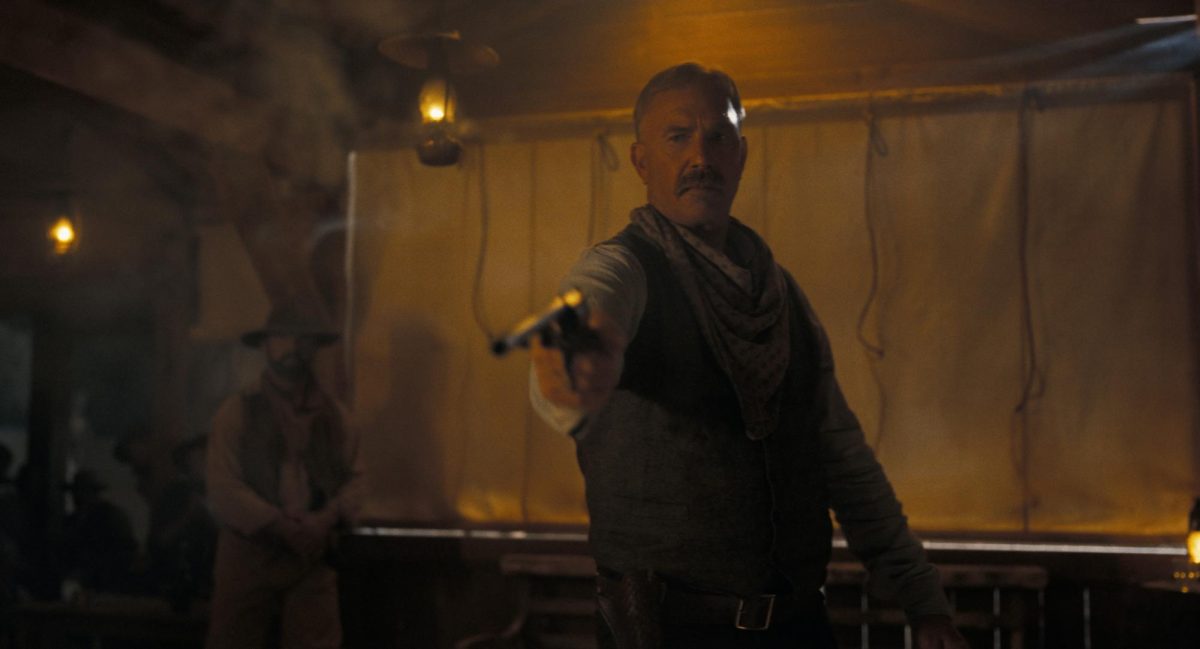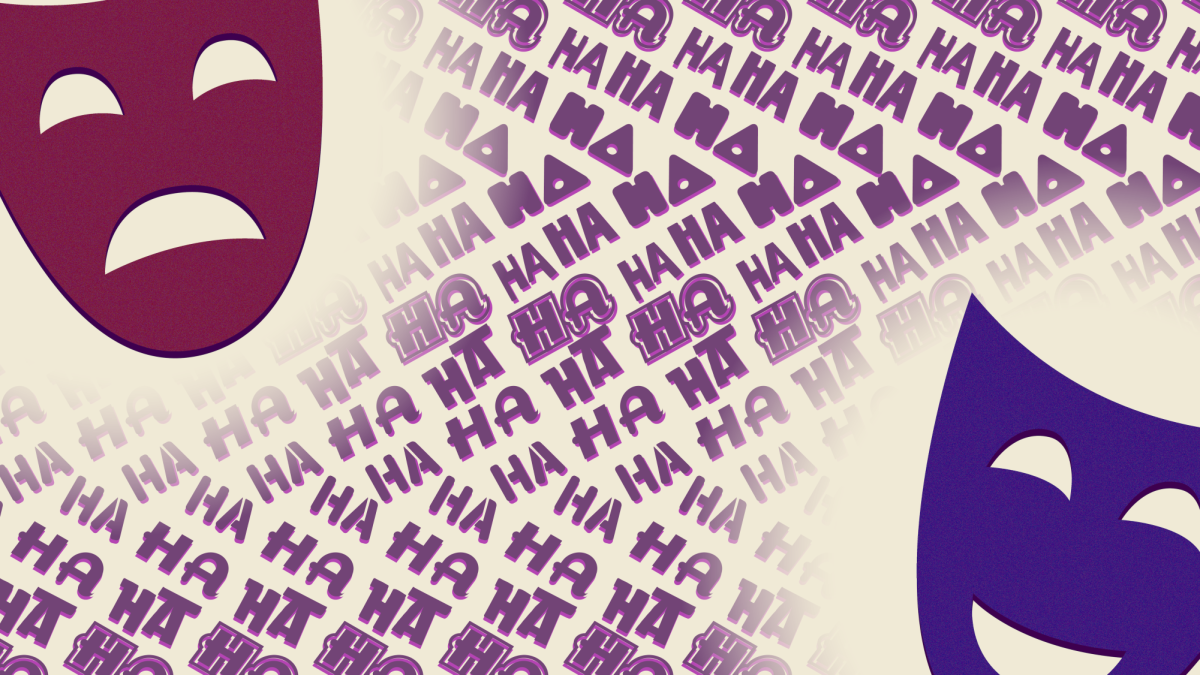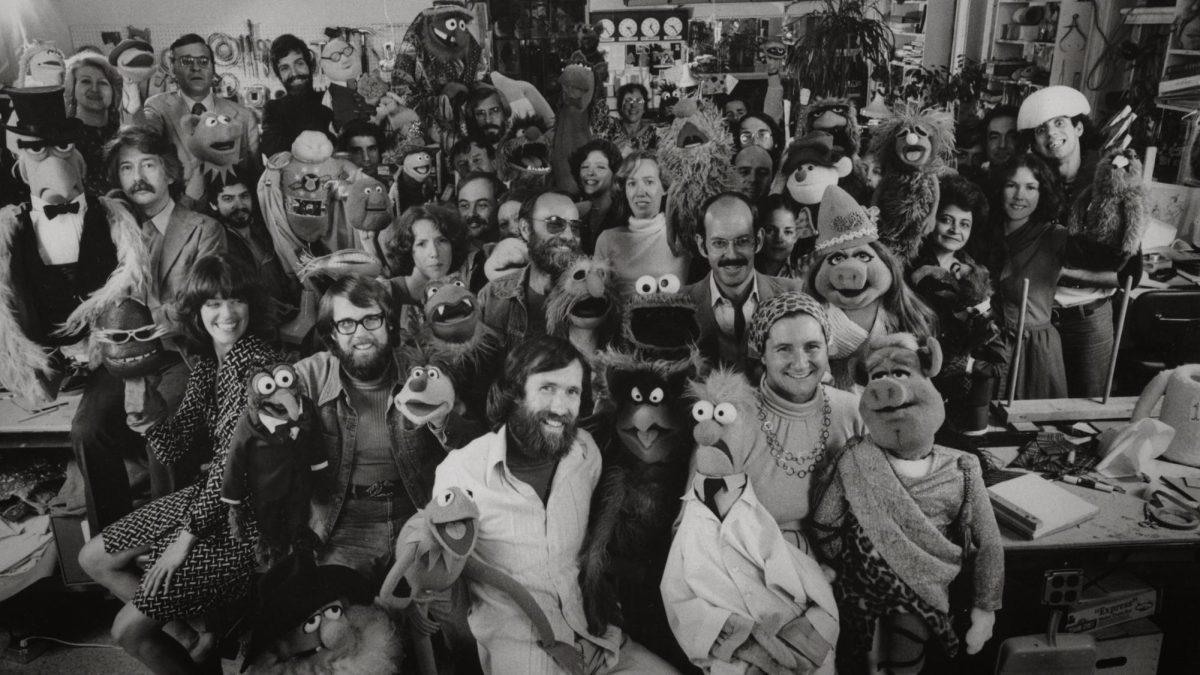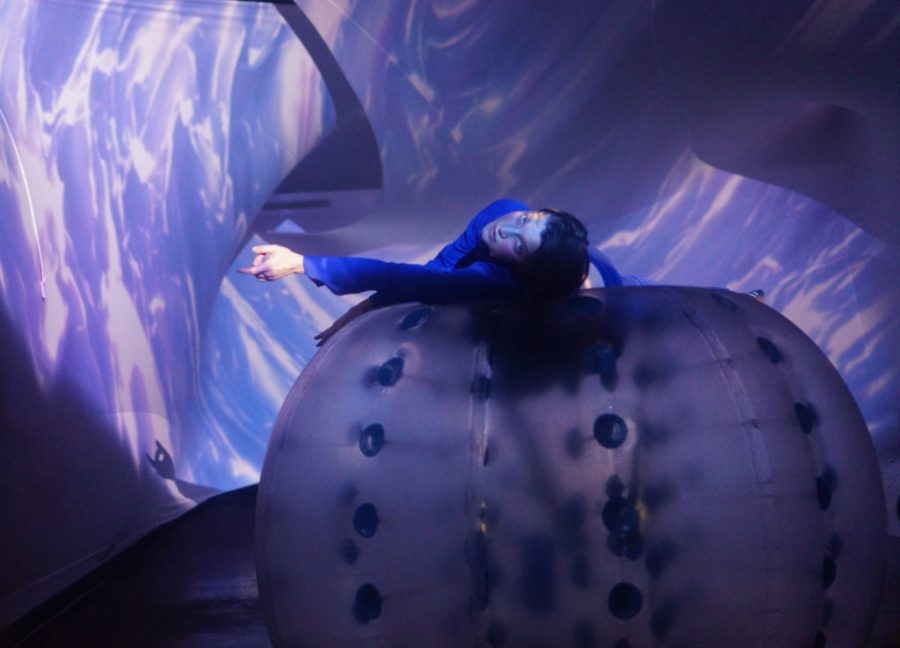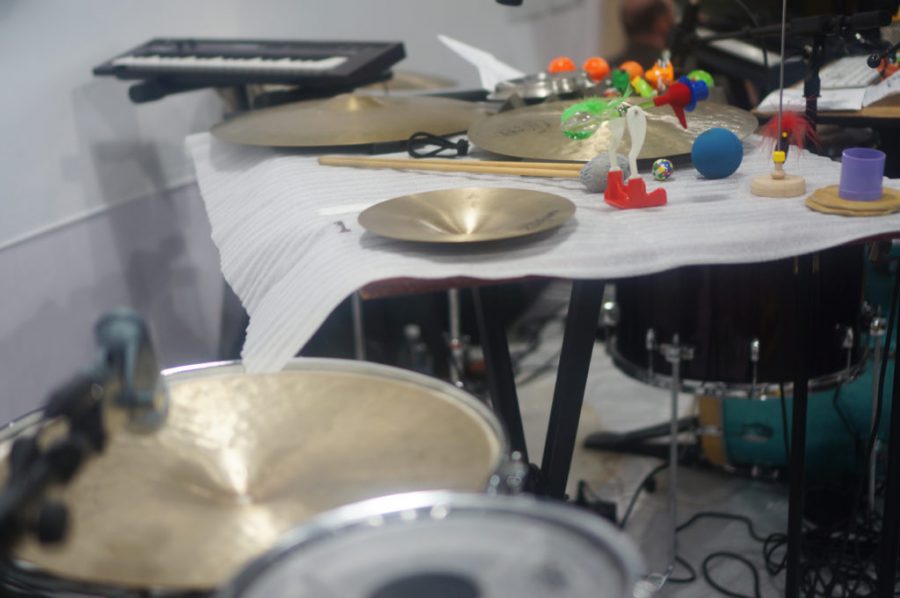In 2011, Dutch bio-artist Jalila Essaïdi created an artificial skin that rivaled the U.S. military’s invention of bulletproof vests made of synthetic spider silk. Part still exhibit, part live performance, Save Your Own Skin is a thought exhibition, movement and dialogue piece in response to this notion of “bullet-proof skin.”
“It’s a saying, but it is also meant literally in my case,” Tanja London, writer and director of the project, said. “So it’s basically three little iterations of how we actually try to do that in different ways…we sort of have different strategies to protect ourselves.”
Taking place in a small shop space outside of the Salt Lake City Main Public Library, each performance aspect of the project involves London using her body and voice to comment on the relationship between military innovation and cultural vulnerability in this art. Not only with dance, but also a spoken word piece. The absolute control she has over her movements delivers a clear commentary on how the skin is representative of this relationship.
“Some European languages before [the Renaissance] had the understanding of the skin as self,” London explained, “Today, we understand our skin as a house that we live in. We live inside our skin, we are not our skin. So it raises all sorts of questions: where are we…[and] how far can we actually go within the framework of ourselves?”
The scoring of these performances is particularly unique. Composers and sound technicians Jason Rabb and Nick Foster took sound samples of ordinary objects such as scanners and printers and spliced them together with edited sound bytes of London’s voice to create a technological echo. During the performance, they took cues from London as they constantly remixed the recordings, mashing them up with live sound created by drum skins, ropes and even toys to create a truly innovative experience.
Foster explained that Rabb provided particular inspiration for one component of their sound. “Jason had the idea for things that play themselves so we were doing some stuff with some toys,” he said.
Rabb elaborated, pointing out exactly what kind of toys they had used. “Like the little water drinker guy that eventually goes ‘ding’, and wind up toys,” he said. “The idea was to have things that you let go of and they make sound on their own.”
Ami Hanna, the lighting designer for the performances, helps connect London and the sound more fully through various degrees of light and shadow throughout the show. Shadow patterns on the walls of the space then create an ambiance that supports the message each act conveys.
The set and costuming are very indicative of skin and its properties of protection and elasticity. London begins in a geometric “suit of armor,” later travels behind “walls” of swimsuit lining and eventually interacts with the audience with ropes and a giant bubble ball. London successfully uses these tools to enhance her movement and dialogue without it distracting from the piece overall.
The thought exhibition portion of the project takes place before and after the live performance. Posters are hung up around the space, speaking to assimilated military technology.
“I don’t think we think enough about the ways in which technology becomes a frame for almost everything we perceive,” said Carloss Chamberlain, dramaturg of the project. “Now more than ever…technology is our extended nervous system. In a way, we’re kind of already cyborgs because of this. In the old days we would use tools, and now our technology kind of uses us…we have to fit who we are as human beings into a technological frame.”
The more permanent and thought exhibition portion of “Save Your Own Skin” will remain at the northern Annex Storefront at the Salt Lake City Main Public Library Plaza from March 17 until April 1. Live performances by London will take place on select days of the exhibition at 7:30 pm. Tickets can be purchased at tanjalondon.com/save-your-own-skin.








